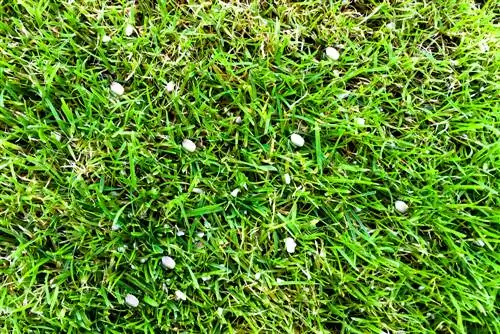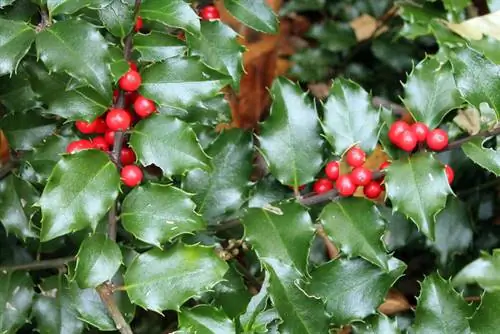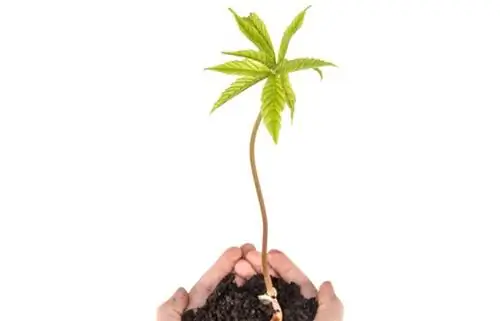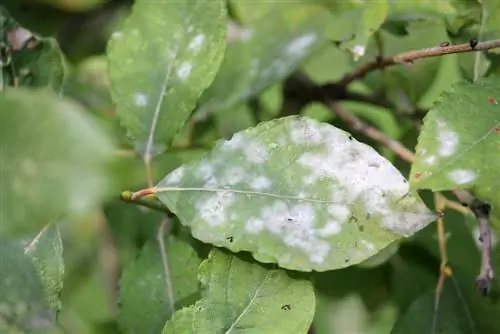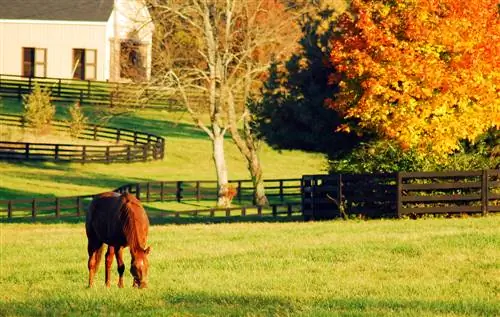- Author admin [email protected].
- Public 2023-12-16 16:46.
- Last modified 2025-01-23 11:22.
A grazed horse pasture should become “ready for use” again year after year through new growth. Since the nutrients in the soil are used up over time, fertilization must be carried out regularly. The most important thing is to use a really suitable fertilizer at the right time.

How should you fertilize a horse pasture?
To properly fertilize a horse pasture, first carry out a soil analysis, choose a suitable fertilizer - ideally calcium cyanamide - and fertilize in spring from mid-March at a soil temperature of at least 8 °C. Remove horse manure in advance and smooth the floor.
Determine the actual situation with soil analysis
Horses prefer grasses and herbs that grow in poor soil. That's why fertilizing shouldn't be overdone. Instead of estimating nutrient requirements, you should rely on an accurate soil analysis. This is carried out approximately every three years in spring.
However, you should not blindly follow the fertilizer recommendations. The analysis usually assumes intensive pasture use by many cattle. If only a few horses graze on it, much smaller amounts of fertilizer must be used.
Choosing a suitable fertilizer
Organic fertilizers are less suitable because horses have a sensitive nose and are bothered by them. Special fertilizers for horse pastures (€53.00 on Amazon) are available in stores. This means you are on the safe side. However, calcium cyanamide is used most often because it also counteracts soil acidification, kills parasites and fights weeds.
Tip
If the soil has a very low pH value, adding calcium nitrogen may not be enough. In this case, you should lime the soil early in the year. For example with carbonated lime, which can also be applied in frost and snow.
Time for fertilization
The ideal time is in spring from mid-March, when the grass resumes growth. If you fertilize earlier, the nutrients cannot be absorbed by the roots and instead they will be washed into the groundwater. This is both ecologically undesirable and costly in the long run.
The floor temperature should be at least 8 °C. Pay attention to the current weather forecast, as subsequent rain is favorable, while sunshine can cause burns.
Preparatory work before fertilizing
So that the fertilizer can be optimally absorbed by the soil and then by the plants, you should do some preparatory work beforehand.
- Collect and remove horse apples
- towing the floor
- if necessary, roll if uneven
Regular reseeding in spring is part of the care of a horse plant and is intended to close bare gaps before weeds can colonize them. However, this step should only be carried out after fertilizing.

